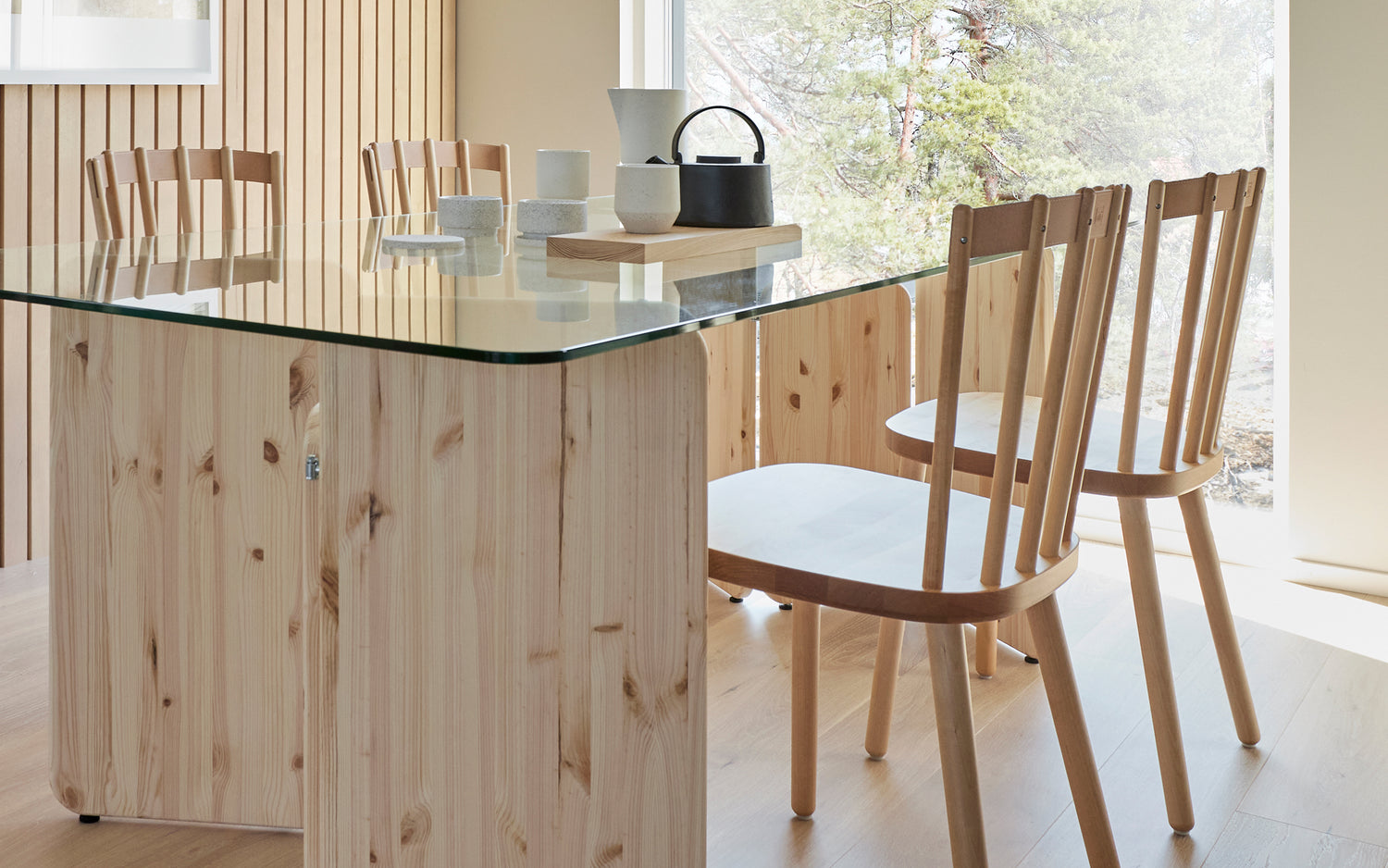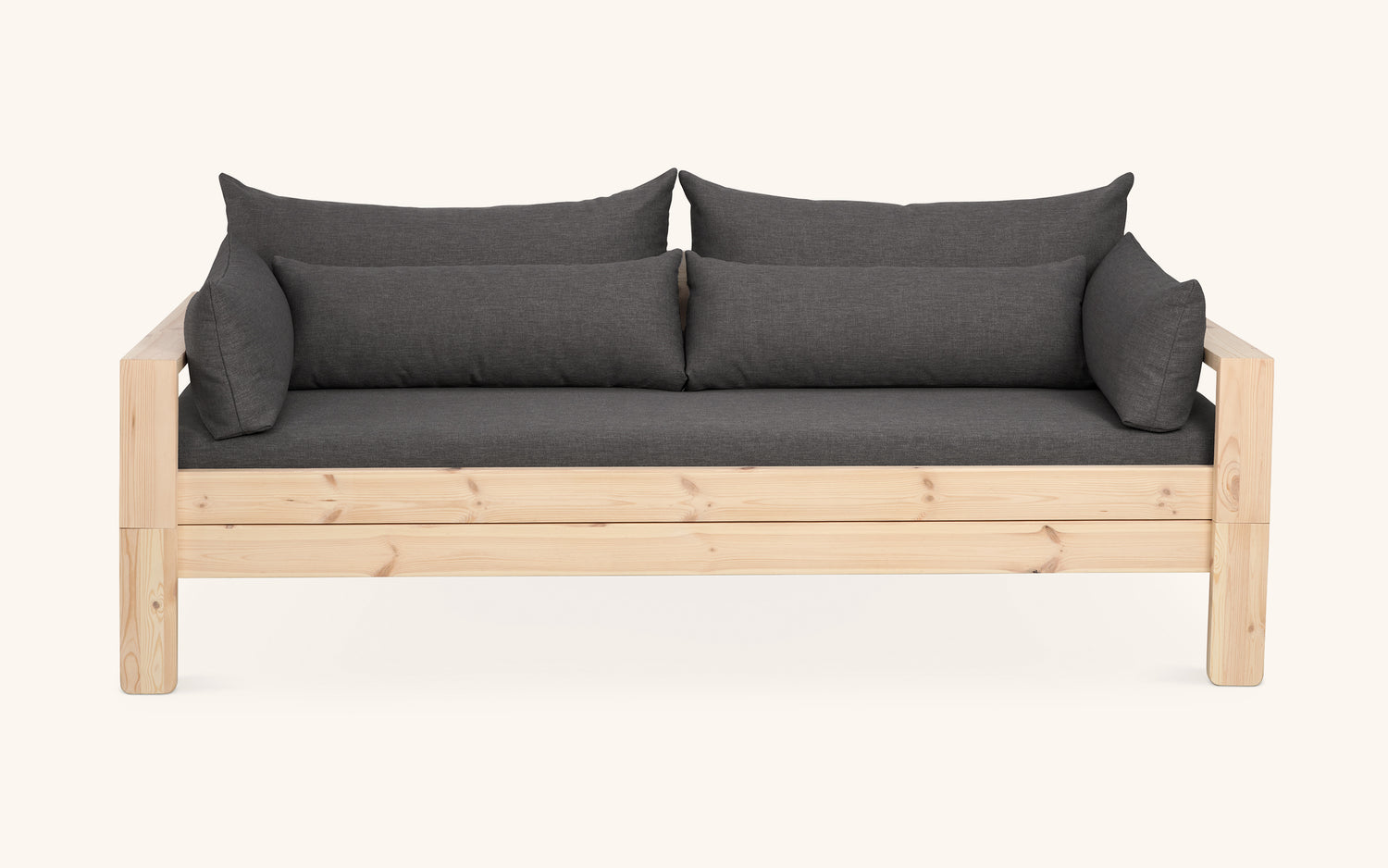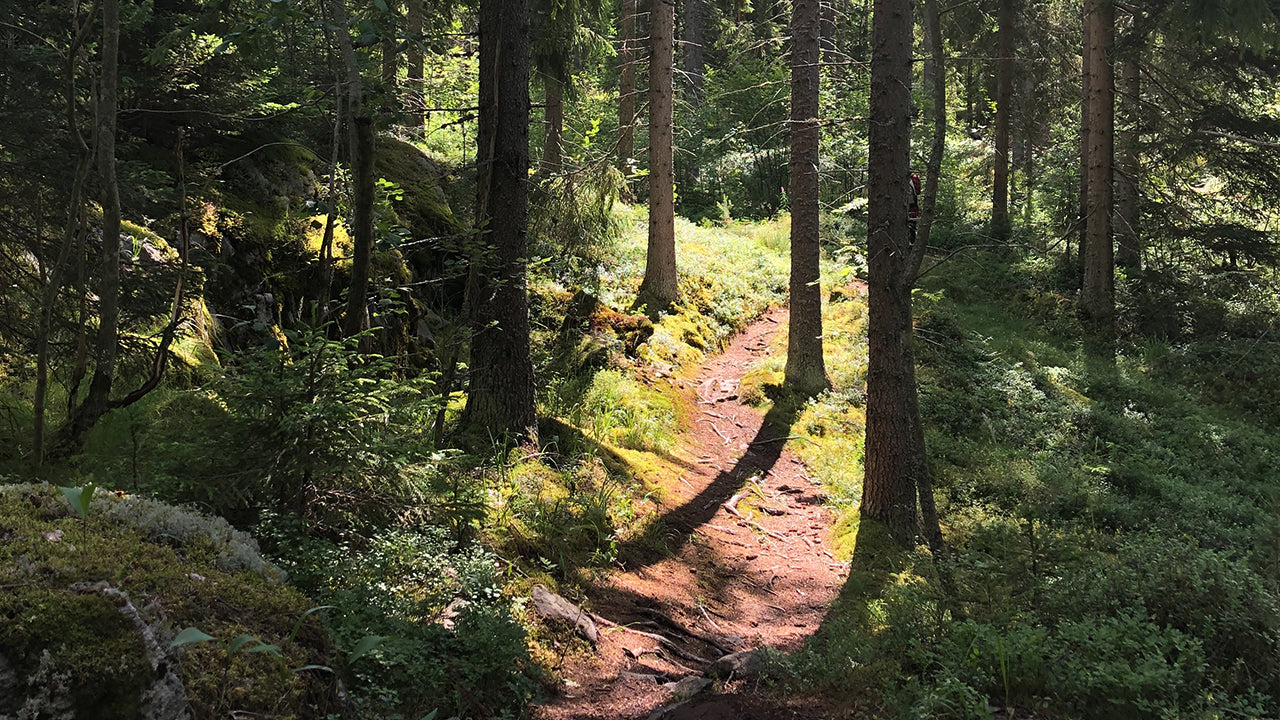
How do we compensate our products?
If the calculation of the carbon footprint seems difficult to understand, it is not easier at all to find a legit way to compensate it. There are several different methods of compensation, and they are based on different methods. The methods are generally related to either the reduction of emissions or the sequestration of carbon, i.e., its removal from the atmosphere. In our opinion, there is no point in offsetting our own emissions through emission reductions, because in practice we would be paying someone to reduce their own emissions. This carbon footprint offset would go through brokerage firms and the actual climate impact that is achieved is questionable. Therefore, we ended up seeking compensation possibilities from the carbon capture methods.
The purpose of carbon sequestration is thus to remove carbon from the atmosphere. There are several methods to achieve this. Some based on carbon capture through technology, and some based on ecosystem restoration and carbon sequestration. Of these different options, we found a method based on planting trees. In this way, we can minimize the net environmental impact of our products in a way that is strongly related to our products and other operations.
Compensating for your carbon footprint by planting trees can feel stupid in a country where planting trees or ensuring reforestation in other ways is part of normal forest management. On the other hand, if we compensated by planting trees somewhere abroad, it would not be certain whether the promised carbon sequestration will actually materialize and whether the impact will be as long-lasting as has been calculated and promised. Although the acceleration of global warming due to emissions is a global problem and does not recognize the country boarders, we still think the best and most reliable way to put our compensation into practice is here in Finland.
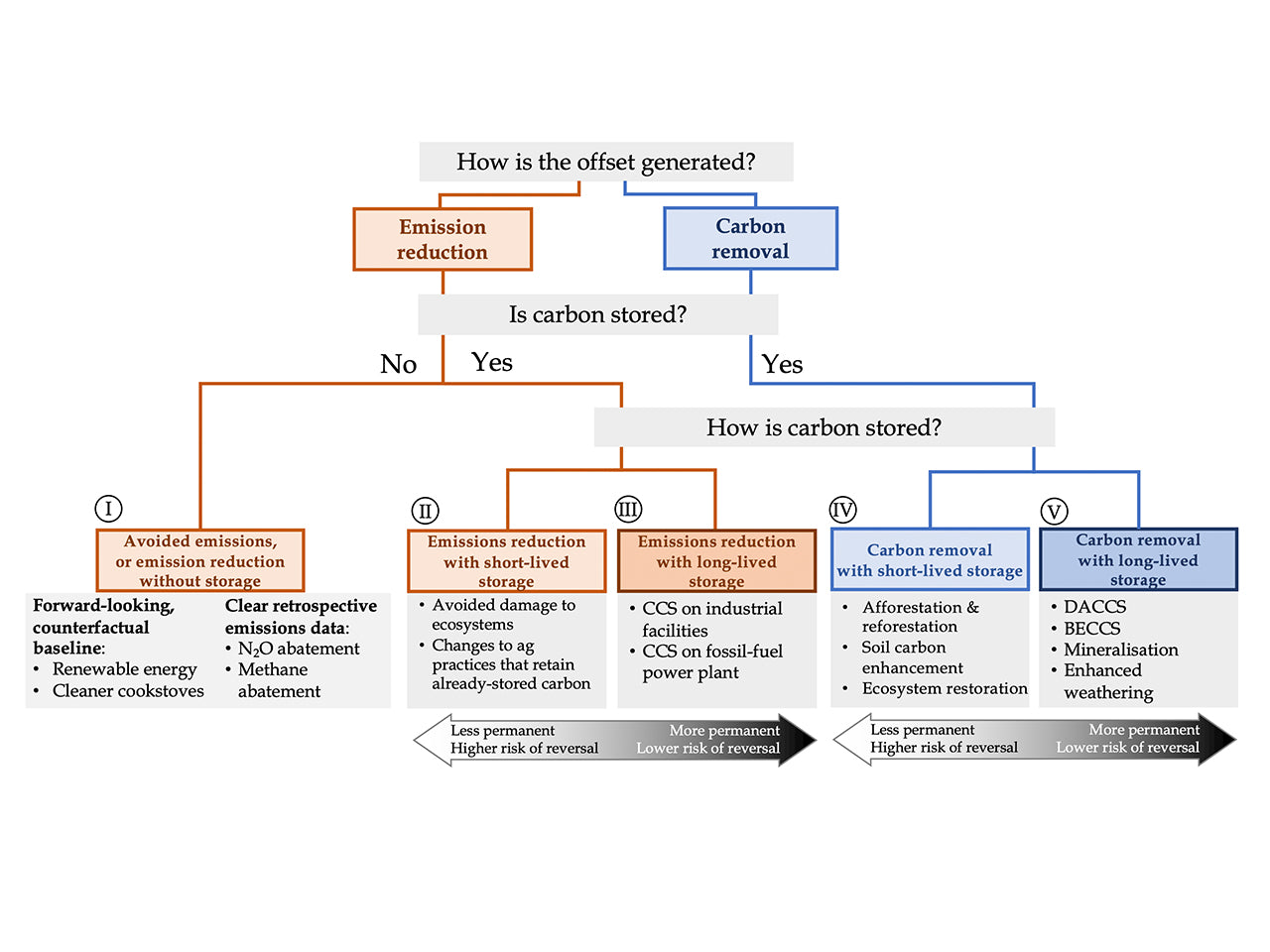
Picture: University of Oxford: The Oxford Principles for Net Zero Aligned Carbon Offsetting, September 2020
Risks of compensation
We are not the only company to use wood in its products and we also hope that the use of wood will increase in the future. Because of this, there is a risk that the forests with which we offset our carbon footprint will be cut down for other uses. It is also possible that the logging pressure caused by using wood will only shift to another area from the area that is protected to ensure carbon sequestration. For these reasons, it is important to consider in which areas carbon offsets based on tree planting are implemented. In our case, the compensation is done by planting the forest in areas that are not naturally reforested. Planting idle land avoids the transfer of logging pressure to adjacent forests, which in turn could occur if we only protected an existing forest.
Forests are vulnerable to various types of damage such as forest fires and pests. Because of this, more trees are plant than what is being sold as compensation to create a buffer for carbon stocks. Carbon sequestration in the soil and the reduction of emissions from the soil due to afforestation have also been excluded from the calculation of compensation. In addition, a diverse forest has better resistance to various pests. All this is done to ensure that the promised compensation takes place despite the risks.
Realization of compensation in practice
The compensation we use to calculate the climate impact uses tools developed by the Natural Resources Institute Finland to monitor the biomass growth. About 50% of the dry weight of wood species in Finland is carbon. For example, the dry weight of softwood is 380–403 kg / m3, depending on the species. With this data, it is possible to calculate that about 190—201 kg of carbon (C), which means 703—745 kg of carbon dioxide (CO2), is bound in one cubic meter of softwood. The carbon bound to the wood remains in it until the wood burns, for example by decay or burning. In addition, as a tree grows, it transfers carbon from the atmosphere to the soil, so the carbon stock generated by one tree is greater than the carbon contained in the wood itself.
To make it easier to understand, the volume of a pine tree in a well-maintained forest ready for harvesting varies around 1 m3. Depending on the log diameter, one can get approximately 1—2 logs for the mechanical forest industry and a couple of fiber logs for a pulp mill out of one average size pine tree. One of such trees has sequestered an estimated 200 kg of carbon from the atmosphere during its growth, which means up to 745 kg of carbon dioxide. This means that one pine tree can compensate the manufacturing for 3—4 Day&Night sofa beds or emissions from a petrol-powered car for approx. 5,000 km. The difference between these is that the Day & Night sofa bed emissions are always compensated.
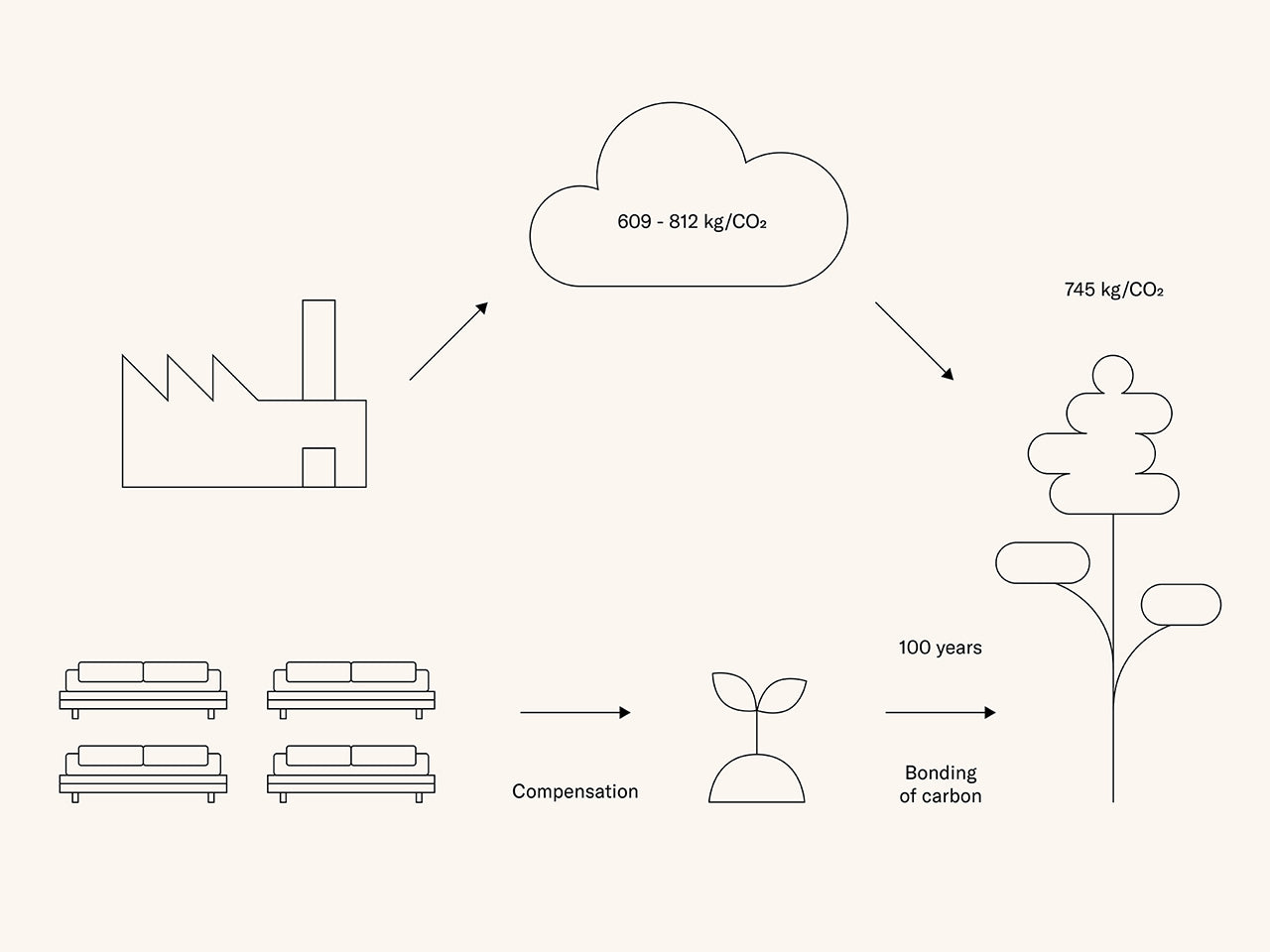
Carbon footprint compensation is a voluntary activity that any business and individual can choose to do. We chose forestation as our compensation method. That does not mean that it would be the only right or the best way. For us, this is the most suitable way now, and we encourage other companies to find the best way for them to reduce their emissions and offset their emissions that can’t be avoided. In this way, we will have a multifaceted climate impact, thus reducing the risk of a total failure of compensation.
(The sources used in this writing are: Finnwatch “Anekauppaa vai ilmastotekoja? Vapaaehtoisen päästökompensaation kysyntä, tarjonta ja laatu Suomessa”, Metsä Group's website.)



